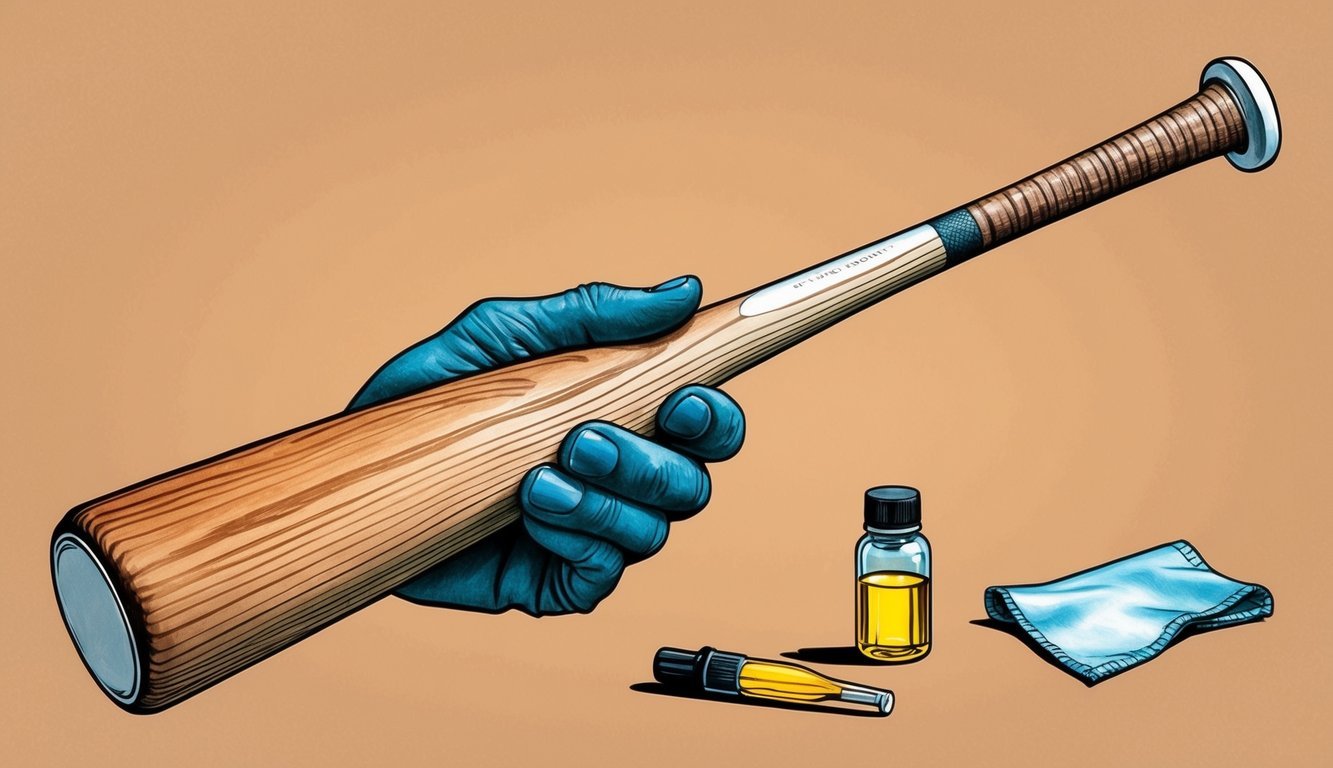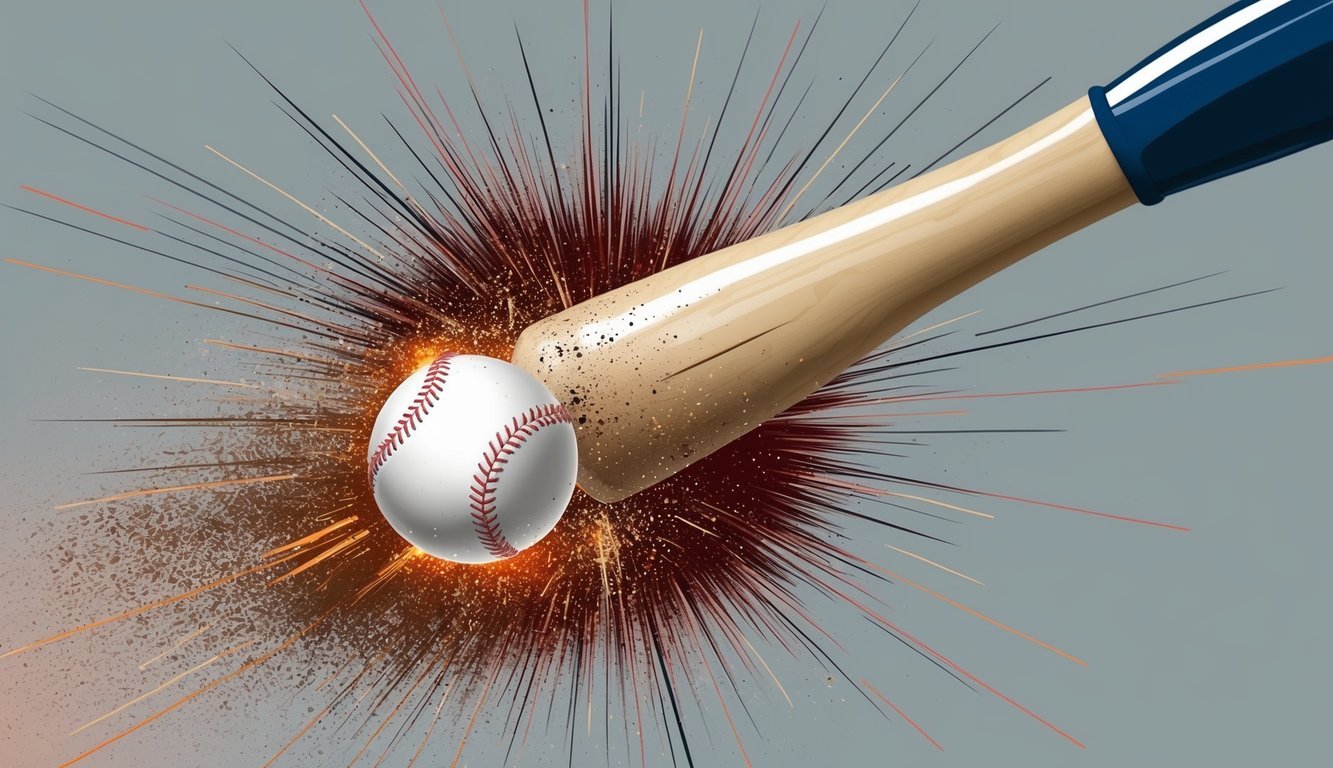Stepping up to the plate can be thrilling and nerve-wracking for baseball players of all levels.
Batting is a fundamental skill that requires practice, technique, and mental fortitude. Proper batting technique involves a balanced stance, efficient swing mechanics, and precise timing to make solid contact with the ball.
Improving your batting skills takes dedication and consistent practice.
Many players find success by focusing on hand-eye coordination drills, studying pitch recognition, and refining their swing path.
Choosing the right equipment, like a well-fitted bat and comfortable batting gloves, can also make a significant difference in a player’s performance at the plate.
For those looking to elevate their game, advanced batting strategies and mental approaches can provide an edge.
Understanding situational hitting, studying opposing pitchers, and developing a pre-at-bat routine are all ways batters can increase their chances of success.
With the right mindset and preparation, any player can step into the batter’s box with confidence.
Understanding Batting Materials
Batting materials play a crucial role in a hitter’s performance at the plate.
The right choice can significantly impact swing speed, control, and power.
Natural Fibers
Wood remains the classic choice for baseball bats.
Ash bats offer flexibility and a larger sweet spot, making them forgiving for new players.
Meanwhile, maple bats provide density and hardness, resulting in more power but a smaller sweet spot.
Birch combines some qualities of both, offering a good balance of flexibility and hardness.
Bamboo has gained popularity as a sustainable option.
It offers durability and a lightweight feel, making it easier to generate bat speed.
Some players appreciate the eco-friendly aspect of bamboo bats.
Synthetic Fibers
Aluminum bats dominate youth and college leagues.
They’re lightweight, durable, and provide excellent power transfer.
Composite bats use a mix of carbon fiber, graphite, and sometimes titanium.
These high-tech options offer a larger sweet spot and reduced vibration on contact.
BBCOR-certified bats blend aluminum and composite materials to meet safety standards for high school and college play.
They aim to mimic the performance of wood bats while offering the durability of metal.
Blended Options
Some manufacturers combine natural and synthetic materials to create hybrid bats.
These often feature a composite handle with a metal barrel.
The goal is to blend the best qualities of each material.
Wood-composite bats use a blend of wood and synthetic fibers.
They aim to provide the traditional feel of wood with enhanced durability and performance.
These can be a good transition option for players moving from metal to wood bats.
Batting Characteristics
Choosing the right batting can make a big difference in how your baseball bat performs.
Let’s explore some key characteristics to consider when selecting batting for your equipment.
Loft and Weight
Batting loft refers to its thickness and can affect how the bat feels in your hands.
High loft batting adds more cushioning, which some players prefer for a softer grip.
Meanwhile, low loft options provide a thinner layer, allowing for more direct feedback from contact with the ball.
Weight is another crucial factor.
Heavier batting can add power to your swing but may slow bat speed.
On the other hand, lighter batting allows for quicker swings but might sacrifice some impact force.
Many players experiment with different weights to find their ideal balance.
Some manufacturers offer customizable batting options, letting you adjust loft and weight to your preferences.
Warmth and Breathability
While not as critical for baseball as for other sports, batting’s thermal properties can still impact comfort during play.
Breathable batting helps wick away sweat, keeping your hands dry and maintaining grip.
In colder weather, slightly warmer batting can help maintain flexibility in your hands and wrists.
However, overly insulating materials might cause excessive sweating in hot conditions.
Some high-tech batting materials offer temperature-regulating properties, adapting to keep your grip comfortable in various weather conditions.
Size and Drape
Batting size typically correlates with bat dimensions.
Proper sizing ensures full coverage of the bat’s hitting surface without excess material that could affect swing mechanics.
Drape refers to how the batting conforms to the bat’s shape.
Good drape allows for a smooth, consistent surface along the entire barrel.
Meanwhile, poor drape can create uneven spots that might affect ball contact.
Most batting comes pre-sized for standard bat models.
However, custom options are available for specialized or modified bats.
Always check manufacturer recommendations to ensure proper fit and performance.
Batting Techniques and Uses
Mastering effective batting techniques is crucial for success at the plate.
Proper form, stance, and swing mechanics can significantly improve a player’s hitting ability and consistency.
Stance and Grip
A balanced, athletic stance forms the foundation of good hitting.
Feet should be shoulder-width apart with weight distributed evenly.
Meanwhile, hands should grip the bat firmly but not too tightly, with knuckles aligned.
Many players find success with a slight bat waggle to stay loose.
Swing Mechanics
The swing starts with a small step toward the pitcher.
Then, hips and shoulders rotate together as the bat comes through the strike zone.
Keeping the head still and eyes focused on the ball is key.
Lastly, follow through completely after contact for maximum power and control.
Hitting Strategies
Different situations call for varied approaches at the plate.
With runners in scoring position, focus on making solid contact to advance baserunners.
When behind in the count, protect the plate and look to foul off tough pitches.
Meanwhile, against a tough pitcher, work the count and try to draw walks.
Practice Drills
Consistent practice hones batting skills.
Soft toss drills improve hand-eye coordination.
Tee work allows focus on swing mechanics.
Live batting practice simulates game situations.
Lastly, video analysis helps identify areas for improvement in stance and swing.
Maintenance and Care

Proper care extends the life of your baseball bat and maintains its performance.
Regular cleaning and proper storage are key to keeping your bat in top condition.
Washing and Drying
Clean your bat after each use to remove dirt and sweat.
Use a mild soap and warm water solution.
Gently wipe the bat with a soft cloth or sponge.
Avoid harsh chemicals or abrasive materials that could damage the surface.
For wooden bats, be extra careful not to soak them.
A damp cloth is usually sufficient.
Meanwhile, aluminum bats can handle a bit more moisture, but don’t submerge them.
Dry your bat thoroughly with a clean towel.
Never use heat sources like hair dryers, as this can damage the bat’s structure.
Let it air dry completely before storing.
Some bat grips are machine washable.
Check the manufacturer’s instructions before attempting to clean them separately.
Handling and Storage
Treat your bat with care to maintain its durability.
Avoid using it to hit hard objects like fences or rocks.
This can cause dents or cracks that affect performance.
Store your bat in a cool, dry place.
Extreme temperatures can warp wooden bats or affect the performance of composite materials.
A bat bag offers protection during transport.
Hang your bat vertically when possible.
This prevents warping and helps maintain its shape.
If you must lay it flat, rotate it regularly to distribute weight evenly.
For wooden bats, consider using bat wax or oil to prevent cracking and extend lifespan.
Apply sparingly and follow product instructions carefully.
Enhancing Techniques

Improving your batting skills requires mastering key techniques and selecting the right equipment.
These methods can significantly boost your performance at the plate.
Choosing the Right Batting
Selecting the proper bat is crucial for success.
Consider factors like weight, length, and material.
Lightweight aluminum bats offer faster swing speeds, while heavier wooden bats can increase power.
Try different types to find what feels comfortable.
Many players prefer end-loaded bats for more power or balanced bats for better control.
Don’t forget about grip tape – it improves handle feel and reduces vibration.
Experiment with various grip styles to optimize your swing mechanics.
Preparation and Basting
Proper preparation sets the stage for a great at-bat.
You should start with a solid stance and grip.
Keep your feet shoulder-width apart and your weight evenly distributed.
Basting, or the slight movement before the pitch, helps maintain rhythm.
You should practice a smooth, controlled basting motion to stay loose and ready.
Visualize success before stepping into the batter’s box.
Take deep breaths to calm nerves.
Then, focus on the pitcher’s release point to pick up the ball early.
Use batting gloves to improve grip and reduce blisters.
Consider using lightweight batting sleeves for arm protection and improved blood flow.
